January 2021

January 2021
The Seoul Metropolitan Government officially classifies hot springs as places with “underground hot water of over 25 degrees Celsius that is safe to bathe in and drink.” Though a handful of hot springs in the capital meet these standards, venues outside the megalopolis offer more experiences just as unique, if not more rewarding. This article looks at communal spas in Incheon, Korea’s second-largest port city and home to the country’s main air hub.
![]()
Written by
Seong Hyekyung
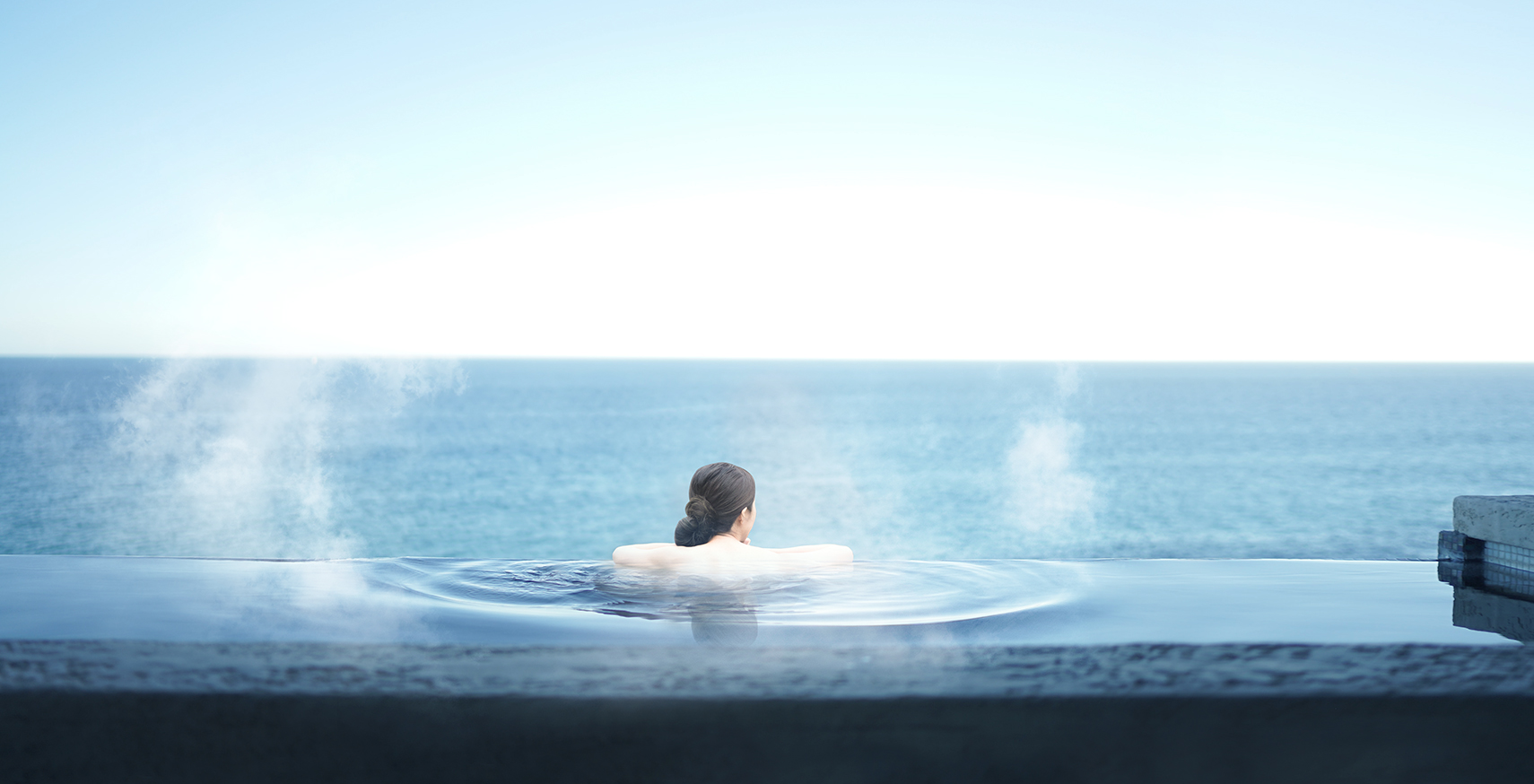
Hot springs and wells, or bathtubs from Mother Nature, often contain water with soothing minerals considered healthy for people from the depths of the earth. Replete with the natural wonders of fluctuating colors and moods with the coming and going of the four seasons, Korea has a rich bathing culture that uses both natural and artificial resources. The following are large-scale saunas and spas in Incheon for sauna enthusiasts and anyone who needs a relaxing but rejuvenating bath.
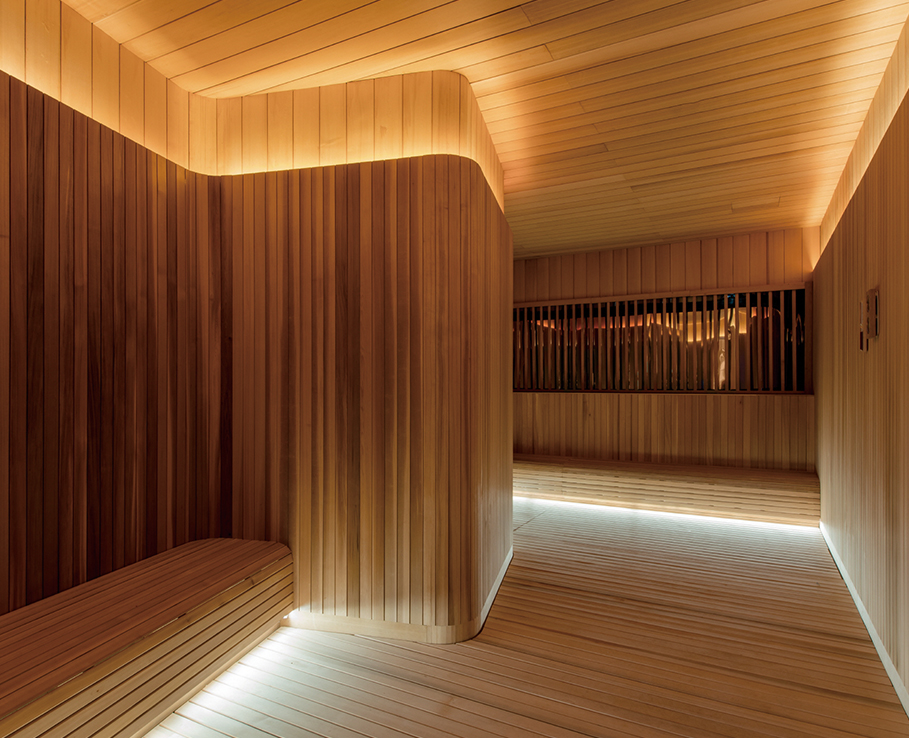 Luxury spas attract visitors seeking relaxation, whether from other parts of the world or just across the street.
Luxury spas attract visitors seeking relaxation, whether from other parts of the world or just across the street.
© PARADISE SEGASAMMY Co. Ltd
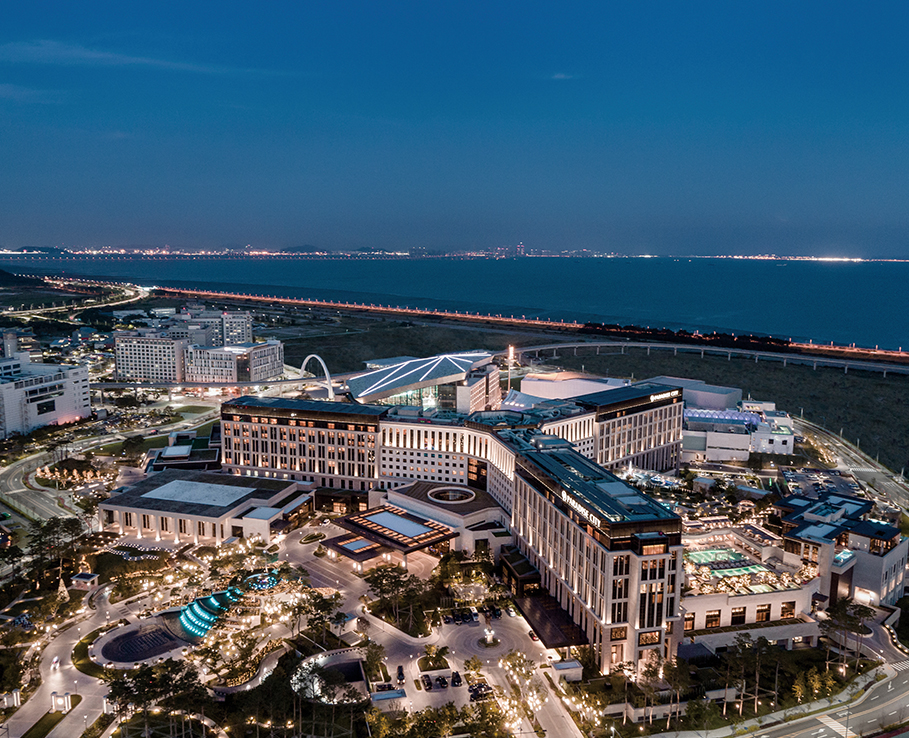 A view of the spas and pools at Paradise City Hotel in Incheon. © PARADISE SEGASAMMY Co. Ltd
A view of the spas and pools at Paradise City Hotel in Incheon. © PARADISE SEGASAMMY Co. Ltd
Located in Incheon’s Ganghwa-gun County, Seongmodo (Seokmodo) Mineral Hot Spring on Seongmodo Island has open-air baths of 15 pools in addition to its clay sauna room, observatory and foot baths with high concentrations of calcium and magnesium as well as other healthy nutrients like potassium, strontium and sodium chloride.
Healthy spring water of approx. 51 degrees Celcius spews from the volcanic Hwagang-am Rock nestled 460 m underground. In addition to being a natural relaxant and good for relieving dry skin, Seongmodo’s waters offer relief from joint inflammation and muscle pain. The waters’ compact salinity are also said to aid digestion and orthopedic rehabilitation, plus an immunity boost.
Since the waters are naturally purified, no sanitary additives or sterilization are necessary for maintenance. The facility runs on eco-friendly solar-powered and geothermal energy and its coastal location is ideal for enjoying the sea breeze.
Korea’s second-largest port city,
Incheon is decked out with leisurely and
inviting communal spas.

Cave Spa in Cimer. © PARADISE SEGASAMMY Co. Ltd.
the island has hotels and accommodations designed for maximum comfort. For those with a taste for luxury, the hotel resort complex Paradise City has Cimer, a jjimjilbang (sauna) with Western-style decor.
Cimer’s spacious Aqua Spa Zone boasts LED media art as well as a pool party space; detox and beautifying treatments are offered at the Jjimjil Spa Zone with shower booths and stalls sporting gorgeous interior. Perhaps the most authentically Korean part of the facility, this zone features assorted themes in its sauna, community and fitness rooms, with an outdoor pool space on the roof that offers more open tubs for optimal relaxation. Other exotic spaces at Cimer include the Cave Spa, Indoor Infinity Pool, Outdoor Pool, Virtual Spa, Aqua Loop and Tornado Slide, and Water Plaza.
Ganghwado Island is home to not only Manisan Mountain, the tallest on the island with a beautiful shrine, and the Buddhist temple of Bomunsa with its breathtaking seaside views, but also the famous jjimjilbang Takyeongjeong. Nestled deep in the island’s forests, the sauna, along with Minmeoru Beach and its campsite, complete Seongmodo Island’s spectrum of natural wonders. Sunset views as well as mud flats invite all types of visitors.
Seongmodo is also home to the forthcoming Reahn World. Planned like a spa village, Reahn is slated for completion and launch in September this year.
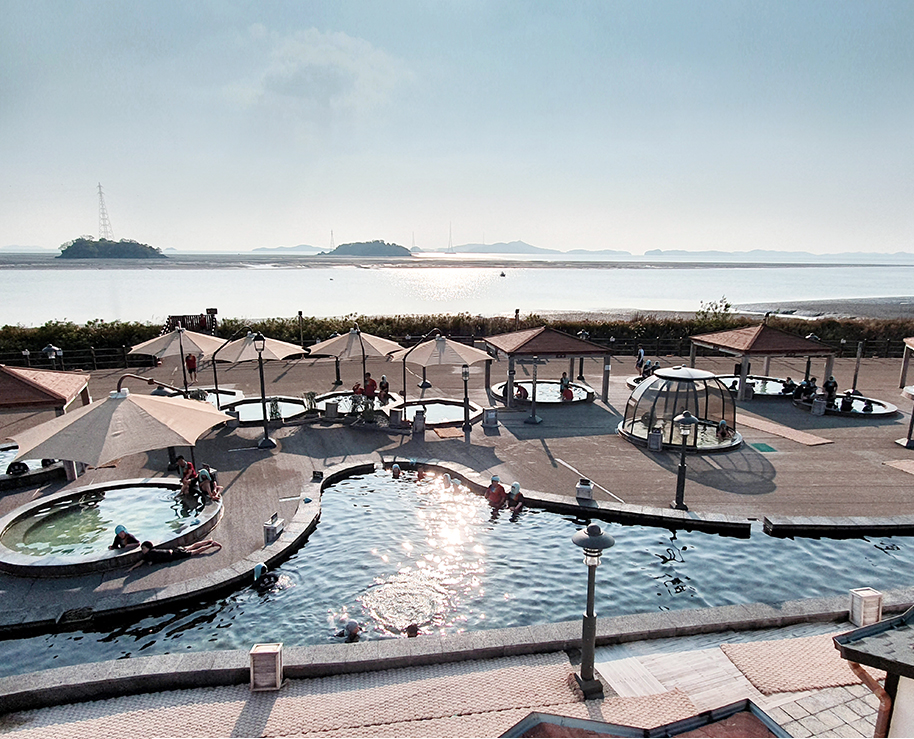 Beauty gurus from other parts of the world have also begun to gush over Korean steam rooms, saunas and mineral-water hot baths. © Ganghwa Facilities Management Corporation
Beauty gurus from other parts of the world have also begun to gush over Korean steam rooms, saunas and mineral-water hot baths. © Ganghwa Facilities Management Corporation
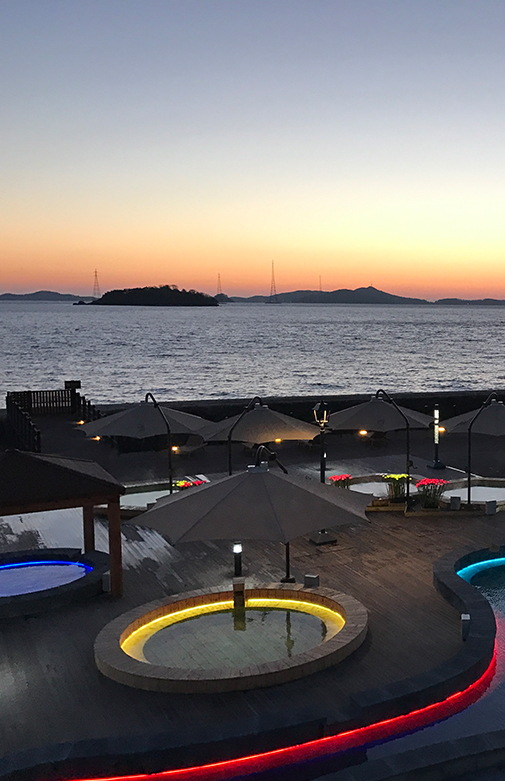
With its primary island Ganghwado at its center, Ganghwa-gun has nearly a dozen smaller islands, among which Seongmodo and Gyodongdo are considered mainstays. Tidal currents and a landscape filled with low-acid mountains including Manisan and the smaller mountains of Hyulgusan, Jingangsan and Goryeosan make commercial use of the region difficult but also show a dynamic topography.
The saltwater that converges from three river streams here, with Gaepung-gun and Yeonbaek-gun counties to its side, used to be an important waterway for transportation to and from Seoul. But the region’s strong currents hindered the passage of many vessels. Creeks and the seawater eventually lead to a better-known Hangang River estuary and belong to the Yellow Sea off the western coast. Another reference point is Gimpo, Gyeonggi-do Province, a city separated from the island by a narrow channel and from the North Korean border city of Gaeseong by a channel of the Hangang. Agricultural farmland has formed amid the oceanic streams; the submarine topography flattens in this area rich in mud flats. The numerous little streams have led to great masses of accumulated sand, contributing to mud flats surrounding every sizable island in the vicinity and that have over time developed into artificial plains.
Saltwater converging from
three river streams
used to be a vital water channel.
Though these are modernized facilities, often luxuriously decked out to cater to tourists in need of refreshment, Korean public bathhouses are also available in littler and down-to-earth forms. Old-fashioned alleyways for instance, will often feature remnants of vintage signposts that if intact, serve the local community.
For more varied forms of communal bathhouses geared for more intimate enjoyment in daily life, we recommend visiting antiquated neighborhoods that have been revamped, like the one introduced in the next section. Also introduced are further variations of how the communal space, once a facility for cleansing, is being reapplied to serve creative needs.
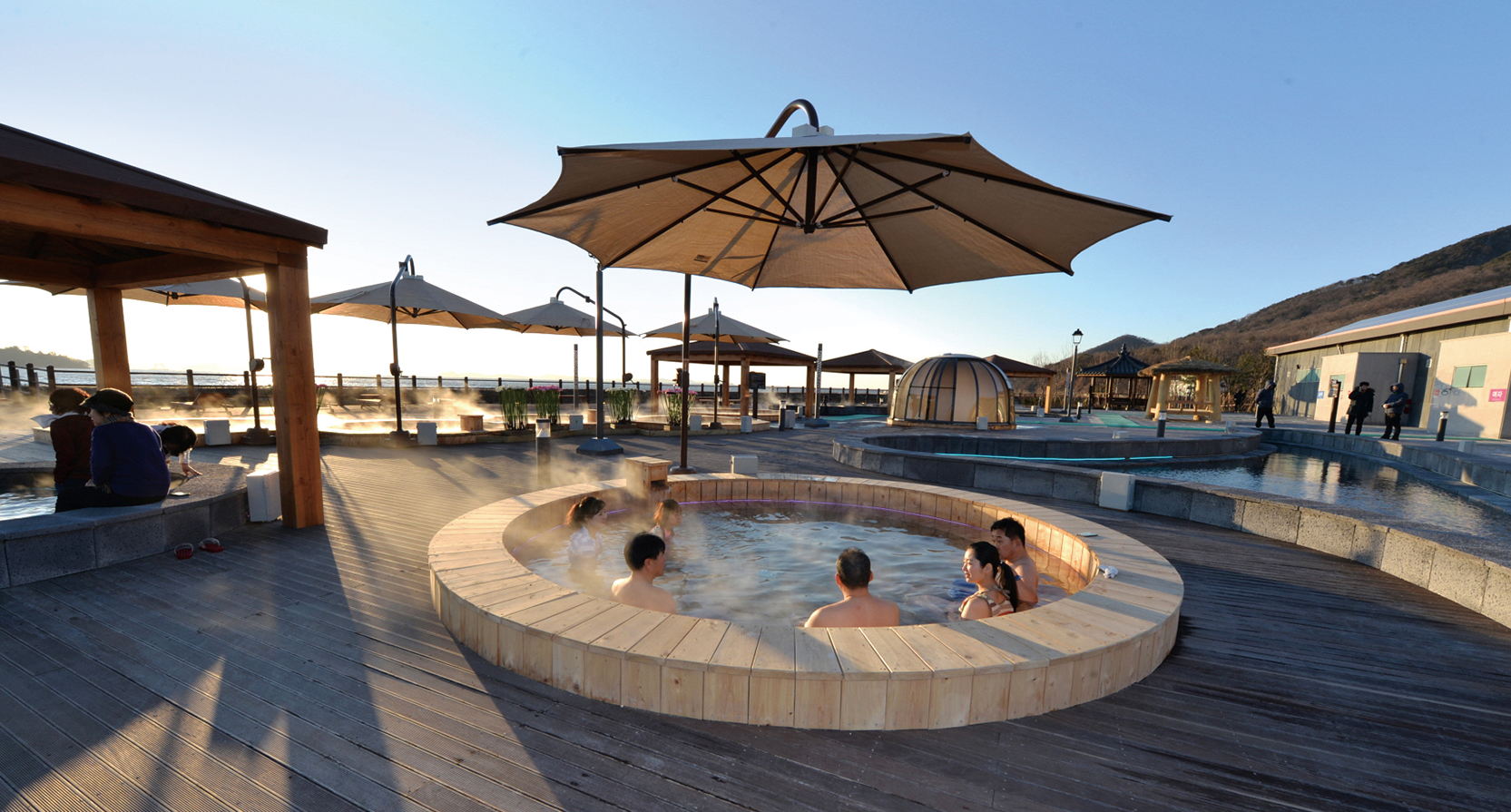 Jjimjilbang facilities and saunas are available in multiple rooms of varied temperatures. © Ganghwa Facilities Management Corporation
Jjimjilbang facilities and saunas are available in multiple rooms of varied temperatures. © Ganghwa Facilities Management Corporation
Jjimjilbang facilities and saunas are available in multiple rooms of varied temperatures. © Ganghwa Facilities Management Corporation